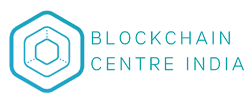You may have heard about blockchain from the news or you may have come across the idea in conversations with your friends.While blockchain is becoming more prominent, it still remains a mystery to many of us. People often relate blockchain to Bitcoin but it is really more than that. Blockchain 36 is a podcast that will help you understand blockchain using the simplest possible terms. Over the course of this series, we will journey through the jungle of technical jargon to unravel the mystery of blockchain! We will discuss what blockchain actually is, how it will affect our daily lives, and whether it can really be trusted. Today, we’ll be exploring the very basics of the technology.
At its core, a blockchain is simply a list of linked records of information. These records are called “blocks”. Each block contains information, and is identified by a unique ID. The technical name for this ID is a “hash key”. Each block contains the hash key of the previous block. Hence, they are linked and form a ‘chain’. People are particularly excited about using blockchains because of how transparent and tamper-proof they make the information they store.
What makes it so transparent and tamper-proof?
A blockchain is stored simultaneously on devices called nodes. “Simultaneous storage” means that every node has direct access to the information stored on the blockchain – we can think of this as a copy of the information existing on each node.
Nodes can be any electronic device, like a computer, mobile phone or even a printer, as long as it’s connected to the internet. For now let’s imagine that each node is a person. People on the same blockchain simultaneously store and have access to the same information located in the blockchain. This means the storage of the information is decentralised i.e the information is not stored in just one or two central locations. Damaging or destroying this information becomes virtually impossible, as doing so would require destroying every single node, making it a very secure way of storing information. This also makes the content of the blockchain very transparent because everyone has access to it.
So, what happens when someone wants to make a change to the database? When someone tries to add a new block to the chain, all other people will receive this new information through the network. For this block to be added, the authenticity of the information it contains must be verified by everyone on the network. This makes putting false information on the blockchain very difficult because many people will be inspecting it very closely!
In the same way, if someone wants to make changes to existing information on the blockchain, 51% people on the network must also agree with this action. Hence, it is virtually tamper-proof. Only by taking control of 51% of the devices could a person make illegitimate changes, and taking control in this way is virtually impossible!
So I hope you all now have a better understanding of the basics of blockchain technology. Remember, the key takeaways from today are the decentralised, transparent and tamper-proof nature of blockchain information storage. Next time on Blockchain 36, we’ll be looking at how blockchain is and will be affecting our daily lives.

